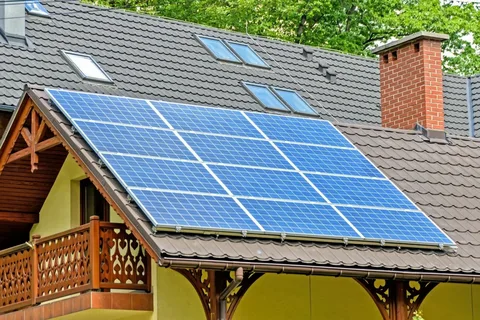The PV solar market has experienced unprecedented growth in recent years. As global energy demands rise and environmental concerns intensify, solar energy has emerged as a key player in the shift towards renewable energy. In this article, we take a deep dive into the current trends, market drivers, and influencing factors that are shaping the future of the PV solar market.
Current Trends in the PV Solar Market
One of the most significant trends in the PV solar market is the increasing adoption of solar technologies across both residential and commercial sectors. In the residential market, there is a growing interest in rooftop solar installations. This is partly due to the decreasing cost of solar panels, which has made them more affordable to homeowners. As technology advances and efficiency improves, solar panels have become a practical and attractive option for residential consumers looking to reduce energy bills and lower their carbon footprint.
In the commercial sector, large-scale solar power plants are on the rise. Many businesses are turning to solar energy to meet sustainability targets and reduce operational costs. Companies in sectors like manufacturing, retail, and hospitality are making significant investments in solar infrastructure, driven by both financial and environmental incentives.
Another key trend is the integration of solar power with other technologies, such as energy storage and smart grids. Energy storage solutions, like lithium-ion batteries, are becoming more accessible and efficient, allowing solar energy to be stored for use during periods of low sunlight. This enables a more reliable and continuous power supply. Smart grid systems, meanwhile, help in managing the distribution of solar energy more effectively, optimizing energy use, and minimizing waste.
Market Drivers of PV Solar Growth
Several key drivers are fueling the growth of the PV solar market. First and foremost, government policies and regulations play a significant role in promoting solar energy. Many governments worldwide are introducing incentives, subsidies, and tax rebates to encourage solar installations. These policies not only reduce the initial financial burden but also create a favorable regulatory environment for solar companies. As countries commit to achieving net-zero emissions by 2050, the demand for clean energy solutions like solar power will continue to rise.
Another important driver is the decreasing cost of solar panels and associated technologies. Over the past decade, the price of solar panels has dropped dramatically, thanks to advancements in manufacturing processes and economies of scale. This price decline has made solar power more accessible to a broader range of consumers and businesses. The competitive pricing of solar panels, combined with the rising cost of conventional energy sources, has made solar energy an increasingly attractive alternative.
Rising concerns about climate change and energy security are also driving the PV solar market. As fossil fuel reserves deplete and carbon emissions contribute to global warming, governments and businesses are seeking sustainable energy sources. Solar energy is abundant, renewable, and clean, making it a key solution to address these pressing issues. Moreover, solar power can help countries reduce their reliance on imported fossil fuels, boosting energy security and reducing vulnerability to geopolitical disruptions.
Technological innovations are also helping accelerate the growth of the PV solar market. Developments in photovoltaic efficiency, including the use of bifacial panels and concentrated solar power systems, are increasing the energy output of solar installations. Furthermore, research into alternative materials for solar cells, such as perovskite and organic solar cells, promises to make solar technology even more efficient and cost-effective in the future.
Influencing Factors in the PV Solar Market
While the PV solar market is experiencing rapid growth, it is not without its challenges. One of the key influencing factors is the availability and cost of raw materials. The production of solar panels requires critical materials like silicon, silver, and rare earth metals. Fluctuations in the supply and cost of these materials can impact the price of solar panels and, by extension, the overall affordability of solar energy systems.
Another factor is the intermittency of solar power. Solar energy generation depends on sunlight, which is not always available. Cloud cover, seasonal variations, and geographic location can all impact the amount of solar energy produced. Although energy storage solutions are mitigating this challenge, the intermittency of solar power remains a factor that needs to be addressed for solar to become a truly reliable energy source.
Grid integration is another critical issue. In many regions, the existing electricity grid infrastructure is not equipped to handle the influx of distributed solar power. Upgrading grid systems to accommodate higher volumes of solar energy requires significant investment and careful planning. Without these upgrades, there could be issues with energy distribution, which could hinder the widespread adoption of solar energy.
Lastly, public perception and awareness play a significant role in the adoption of PV solar systems. While more people are becoming aware of the environmental benefits of solar energy, there are still segments of the population that view solar technology as too expensive or complicated to install. Raising awareness about the long-term benefits of solar power and offering financing options for installations are essential to increasing adoption.
Conclusion
The PV solar market is poised for continued growth, driven by technological advancements, government support, and rising environmental concerns. As solar technology becomes more efficient and affordable, the adoption of solar energy will increase across residential, commercial, and industrial sectors. However, challenges such as the availability of raw materials, grid integration, and intermittency must be addressed for solar to reach its full potential. With ongoing innovation and investment, the future of solar energy looks bright, promising a cleaner, more sustainable energy landscape.



